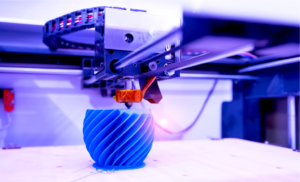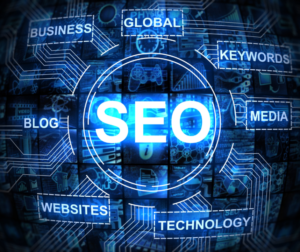Reno SEO is a cost-effective way for businesses to increase visibility and brand awareness. It can also generate more qualified traffic and help convert visitors into customers. However, it can take some time to see results.
SEO consists of content and site design improvements that make indexing pages easier for search engines. It also includes alt text for images, which helps search engines understand what a page is about.

Keyword research is a crucial step in any SEO strategy. It helps you determine what search terms users type into Google to find your products or services. It also allows you to discover the keywords that your competitors are targeting and how to best compete with them. It is a process that requires both knowledge and practice, but once you learn the basics, you can easily use it to optimize your content for search engines.
Many keyword research tools are available, including Clearscope, SEMrush, and Ahrefs. These tools can provide valuable metrics, such as search volume and difficulty, which are critical factors in determining the effectiveness of a keyword. These metrics can also help you prioritize keywords that align with your business goals. For example, a search term with high volume could be the perfect opportunity to create a product page, while a low-volume search term may indicate that you need to improve your website’s navigation structure.
In addition to assessing search volume and competition, it is important to understand how each keyword relates to user intent. For instance, a search for ‘used golf clubs’ indicates transactional intent, while ‘types of golf clubs’ would be more informational. Knowing the intent of each keyword phrase can help you identify relevant pages to add to your site, and it can also inform the style and tone of your content.
It is important to understand the intent behind each keyword phrase so that you can target it appropriately. For example, a user who searches for ‘used golf clubs’ might be looking to buy or trade their current set of golf clubs, while someone searching for ‘types of golf clubs’ is probably in the research phase and not ready to make a purchase. This information can be used to create content that targets both types of users and will result in more qualified traffic. In addition, this will ensure that your content is relevant to the needs of your audience and will help you rank higher in SERPs.
On-page optimization
On-page optimization is the process of fine-tuning various website components to help search engines crawl, understand, and rank pages for relevant queries. It also helps websites build credibility and trustworthiness. It involves everything from keyword research and semantics to HTML tags and site architecture.
In order to maximize on-page optimization, it’s important to start with content that is valuable to your audience and SEO friendly. This includes using the right keywords in the title tag and meta description, ensuring that your content is readable for people and search engine bots, and organizing your website structure and internal linking. In addition, it’s important to use images in your content and compress them so that they load quickly.
The first step in on-page optimization is conducting keyword research. You’ll want to identify a few relevant long-tail keywords that are popular and relevant to your business. After that, you can integrate these keywords into your web page content. However, it’s important not to over-incorporate keywords into your content, as this is known as keyword stuffing and can damage your rankings. Instead, try to incorporate your keywords naturally so that they sound natural.
Creating engaging, user-centric content is essential to on-page optimization, as it signals to Google that your site offers value to visitors. It is also helpful to use internal links to guide readers to other parts of your site, which keeps them on your site longer and tells Google that your site is authoritative and trustworthy.
Pre-click on-page optimization is the first thing that searchers see when they run a query on an SERP, and it is comprised of your title tag and URL. It is important to optimize these elements because they can make or break your SERP ranking. You can check your title tag by right-clicking on a Chrome window and selecting “view page source.”
Post-click on-page optimization is what happens when a searcher clicks on your listing in an SERP. This is the main copy on your webpage and includes your main header and subheadings, hyperlinks, and images. It’s important to optimize these elements to ensure that they are relevant to the searcher’s query, as this will increase your chances of getting clicked on.
Link building
Link building is one of the most important aspects of SEO, and it involves getting other websites to link back to yours. This process can be time-consuming, but it is essential for a successful search engine optimization campaign. It can be done in a number of ways, including guest blogging, article submissions, and even paying for links. However, it is important to remember that there is a right way and a wrong way to build links, and it’s best not to take shortcuts. Buying links, for example, is against Google’s guidelines and can damage your search engine ranking.
To start your link building efforts, it’s important to create “linkable assets.” These are pages on your website that are so interesting or useful that other people will naturally want to link to them. These could be blog posts, infographics, podcasts, or videos. It’s also important to include your target keywords in the anchor text (the visible text portion of a hyperlink) of your links. This helps search engines understand what your linked page is about and gives it more weight in the rankings.
Once you’ve created your linkable assets, it’s time to reach out to other websites and ask them to link to you. There are a few different tactics for this, but the most common is submitting your website to web directories and writing guest blogs. Another option is finding pages that list resources similar to yours and asking to be included on those lists.
The quality of the websites from which you get links is a key factor in your search engine optimization rankings. For example, a link from the New York Times is going to pass more authority than a link from your aunt’s horseback riding school website. It’s also a good idea to find out what types of links your competitors are getting, and then try to replicate them.
Finally, don’t forget to promote your content! Social media, newsletters, and email marketing are all great ways to spread the word about your site. But don’t spam your audience or your competitor’s audience; that will only backfire.
Social media
The role of social media in SEO has long been debated. Some experts say it has no influence, while others claim it is a crucial element of any marketing campaign. Regardless of the truth, it is important to understand how social media and SEO interact. This will help you optimize your social media content and improve search engine rankings.
There are many ways to tie your social media strategy into your SEO campaign. Some tactics include promoting your website on social media, optimizing your social media profile, and using relevant hashtags in your posts. In addition, you should build a social media following and encourage engagement to boost visibility and brand awareness. Social media also offers the opportunity to generate backlinks and improve behavioral metrics, such as dwell time and bounce rate.
Social media can be used to create engaging content that reaches a large audience and drives traffic to your site. In fact, a study by Hootsuite found that articles with higher social media shares receive 22% more organic search traffic than those without. This is because Google considers the popularity and authority of a website when ranking its results.
Many people use social media platforms to find information about products and services. If your business is active on TikTok, you can target these users by using keywords and creating engaging content that answers common questions. For example, the search term “how to” is one of the most popular searches on TikTok.
While it may seem that social media does not directly impact SEO rankings, the two strategies are intertwined. Social media can have a major impact on known ranking factors, such as click-through rates, bounce rate, and time on page. It can also affect the user experience and brand perception, both of which are important ranking factors for businesses.
It is important to remember that social media can be manipulated, so you should only promote high-quality content on your social channels. This will prevent your followers from ignoring your content and will increase the likelihood of them sharing it with their followers. This can result in a significant increase in your site’s SEO performance and overall visibility.



